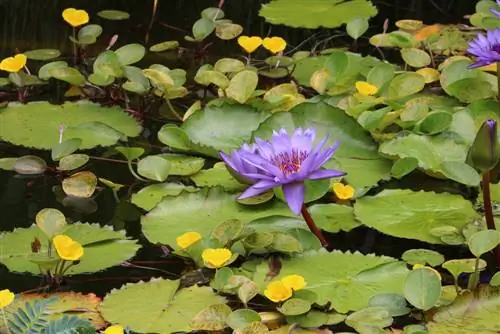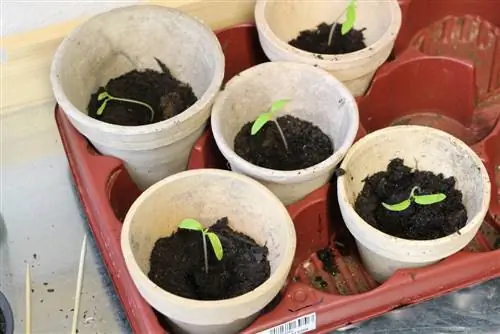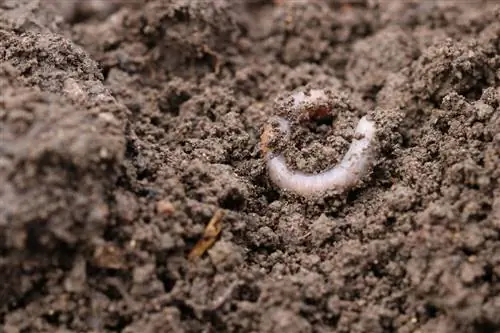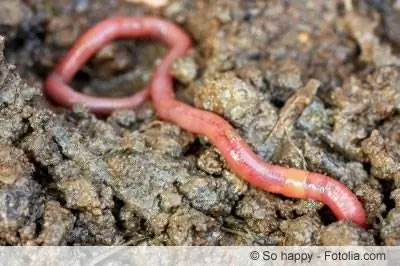- Author admin [email protected].
- Public 2023-12-17 03:39.
- Last modified 2025-01-24 12:45.
There are very different views on the pond substrate. If you read into this topic, you can quickly get confused. Of course, companies want to sell their substrates, but the expensive soils are often not that cheap. Many pond owners report that they have no soil at all in their pond, just everything covered with various stones. Even in the plant baskets they only put gravel and that only to hold the plants in place so that they have an anchor. Others, on the other hand, are satisfied with their pond substrate from a specialist retailer. The only thing that will probably help here is to try it out, because every pond is different, simply because of its location, its surroundings and its inhabitants, whether wanted or not.
Pond substrate
Pond substrates must above all be lean. If too many nutrients get into the pond, the plants will be happy, but so will the algae. The entire water quality changes; in the worst case, the pond can tip. The water remains permanently cloudy. If algae spread too much, they consume too much oxygen and thus suffocate all life in the pond. That's why it's important to avoid an excess of nutrients in the water. This is done by having enough plants, little or no fish stock and an appropriate pond substrate.
- Absolutely skinny
- If there are too many nutrients, an algae bloom will occur
Do you absolutely need pond substrate?
According to pond soil manufacturers, the pond substrate forms the basis for a stable pond. Purchased material is usually quite porous and has a large surface area, which is ideal for the development of microorganisms. These in turn are necessary for a stable biological balance. It is recommended to cover 60 to 70 percent of the soil with pond substrate. However, many pond owners as well as suppliers and manufacturers of ponds are of the opinion that a pond can do well without pond soil. We strongly advise against using pond substrates for ponds with fish. Pond soil can be used for natural ponds that are of the appropriate size, but it is not absolutely necessary. Even in natural ponds, it is recommended to mix the purchased substrate to make it even leaner.
You use one part pond soil and two parts sand or clay. The pond substrate should also be covered with a layer of sand, gravel or clay. This makes it more difficult for the soil to float. Even better than generously spreading soil at the bottom of the pond is to only use it for plant baskets. In principle, you can also plant aquatic plants in gravel or clay granules in natural ponds. It is often recommended not to use pond soil in fish or koi ponds. Even nutrient-poor soil contains dyes, minerals, nutrients and other things. These substances change the water quality. Even fish parasites can be introduced this way. Fish like to rummage on the bottom and stir up the pond soil. The result is cloudy water.
- Manufacturers recommend pond substrate, 60 to 70 percent of the soil
- Many pond owners do not use pond soil
- If so, then heavily “diluted”
- 1 part pond soil, 2 parts sand or clay
- Additionally cover pond soil with sand, gravel or clay
- This makes bloating more difficult
- Better to only use plant baskets with gravel or clay granules
- Generally do not use pond soil when stocking fish - too many nutrients
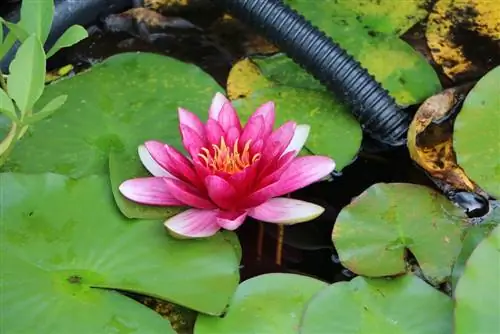
Even if only gravel is used, there are actually enough nutrients. Over time, the spaces fill with sediment. This mud that is stored there has enough nutrients for the plants in the pond. Over time, the plant roots and the gravel form a solid bond. If the mud becomes too much, it can be removed superficially. Pond vacuum cleaners where the pressure can be regulated are well suited for this. The suction power should be adjustable. In principle it is enough to do this once a year. It should be borne in mind that when vacuuming, small creatures, plankton and microorganisms are also sucked out, which are important for the balance in the pond. So you shouldn't vacuum too often. You can also overdo it with cleaning. Less is more here. The problem with purchased pond soil is that its quality cannot be checked by a layperson, which is most pond owners. There are so many different substrates on offer that no one can see through them anymore. That's why it's often better to just use gravel or mix your own pond soil.
Make your own pond substrate
If you want to use pond substrate but would rather spend less money, you can mix it yourself. Experts recommend using 1/3 clay and 2/3 sand or gravel because this can largely avoid digested sludge. This mixture is lean and it may happen that you need to add some fertilizer. However, this is usually not the case because external influences cause enough nutrients to enter a normal pond. Silt or loess can also be used instead of clay. Clay minerals help with the slow release of any nutrients. Sand is neutral to slightly acidic, very poor in nutrients and low in s alt. That is also crucial. It is important for all ponds where fish are planned to be stocked with a layer of stone on the substrate.2 to 3 centimeters is enough so that the fish cannot constantly stir up the bottom, which results in permanent cloudiness of the water. The bottom does not need to be covered with soil by more than 5 to 10 cm. On the planting terraces, this layer should be higher, around 15 to 20 cm. The least soil is needed for the slope sections.
- Clay and sand
- Clay and gravel
- Closure or loess as an alternative to clay
Tip:
If gravel is added to the pond, the water initially becomes cloudy. This can even happen with washed gravel. When the pump is switched on, the water clears again. You can usually save yourself the work of washing the gravel yourself. If it is very dirty, you can use the garden hose and at least remove the coarse dirt. It is also important to make sure that the gravel is lime-free.
Seeding ground for water lilies
Water lilies don't always thrive in a gravel bed. Some have slightly higher requirements for their substrate. You can find various information about the requirements of water lilies, often very contradictory. It is said that they like clay and dried peat. The substrate should have a loose and airy structure so that sufficient oxygen can reach the roots. Water lily roots need plenty of air to prevent them from suffocating. On the other hand, it is said that water lilies only like purely mineral substrates without organic components. The best option is probably clay soil, which consists of 60 to 70 percent clay and 30 to 40 percent sand. The soil should be covered with a layer of sand. River sand or aquarium sand with a grain size of 1 to 2 mm is suitable as sand. Do not use sandbox sand, it is too sharp.
In order to flower, minerals and trace elements are needed, which is why some fertilizer should be used. But only use the special fertilizer cones. These are pressed directly into the clay layer, 3 or 4 per plant per season. Always place water lilies in a plant basket so they can be easily moved or taken out of the water. The baskets must be large enough, at least 30 x 30 x 25 cm. Insert cloths prevent the soil from being washed out. The bale should be covered with gravel at the end.
- Loose and breezy
- Limescale-free or at least low-limescale
- Clay clay made from 60 percent clay and 40 percent sand
- River sand is ideal
- Provide water lilies with special fertilizer cones
Conclusion
There is a lot of debate about what goes into a pond. Every pond owner has their own experiences. This is often very confusing for those new to ponding. Everyone recommends something different, the range of opinions ranges from ready-made pond substrates and soil, to gravel or river pebbles, to no floor covering at all. You can't give general advice about what's best. It always depends on the location and size of the pond, the vegetation, the stocking, the filter system or the entire technology and the ideas that the owner has. It is certainly helpful to seek advice from a professional, but you should also get lots of information from other pond owners. You can benefit from their mishaps and good experiences. For small ponds, it can make sense to try out different solutions; this is neither particularly expensive nor very labor-intensive. The biological balance works better in large ponds anyway, so other options arise. Given the size and the amount required, trying it out isn't a good idea.

